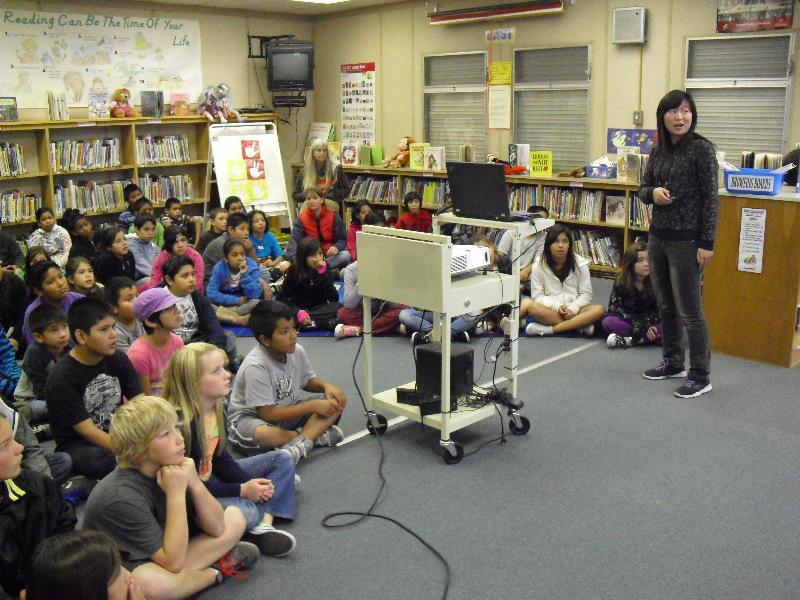“The Adventure in Your Community” was the theme of this year’s Geography Awareness Week (GAW), a public awareness campaign that occurs every year during the third week of November. Promoted by National Geographic Education Programs, GAW encourages people to consider and learn about the world through a geographic perspective.
The UCSB Department of Geography continued its tradition of sending students, faculty and staff out into local K-12 schools to give presentations on wide-ranging geographic topics. On hand this year were presentations about Canadian geography, knowing your local soils, the California desert, mapping with kite and balloon aerial photography, marking locations with GPS, the geography of fire, human migrations, marine spatial planning, and many others. Eleven schools throughout Santa Barbara and Goleta participated, with classes ranging from kindergarten through 12th grade. A total of 18 UCSB undergraduate and graduate students, faculty, and staff represented the department, delivering presentations to approximately 25 classes.
Adam Araza, a junior transfer majoring in Geography, visited two classes of second graders at Santa Barbara Community Academy to talk about maps and other geographic tools. He taught the students how to use a compass and reinforced the concept of directions through a game of Simon Says. “I thought it was really cool how amazed they were with very basic maps of California and the United States and it even made me think, ‘hey, these do look like pretty cool maps.’”
Graduate student Heather Berry Frazier used hands-on demonstrations to teach kindergarteners at McKinley Elementary about the water cycle. Using baking tins, foil and wax paper she constructed mini-“watersheds” and had the students simulate rain using a spray bottle. After talking about the “rivers” and “lakes” that formed, she led them through an experiment to demonstrate infiltration rates using cupfuls of rocks, sand and clay.
“I learned that talking to a group of kindergartners is probably more difficult that talking to any other age group, but it is so much fun because they are all so excited and they all try so hard to understand,” reported Heather. “Due to their age, it is difficult to teach material that is too complex, but with hands-on demonstrations, they can physically see what I’ve talked them through and start to understand it by experience. This presentation gave me the challenge and the opportunity to try to teach science to young children through experiments and it solidified my opinion that it takes hard work and care to bring good science education to the community.”
Positive feedback came from students and teachers, too: “I liked learning about geography, and more about how to use a GPS” reported one Garden Street Academy fifth grader. Several teachers remarked how much they enjoyed the presentations and appreciated the opportunity for their students. One particularly gratifying question came from a Santa Barbara Community Academy fifth grader: “How do you become a geographer?”
This article was contributed by Kitty Currier for the Grad Student Outreach Committee. More information about Geography Awareness Week can be found here; more about Kitty’s research can be found here.




.jpg)
